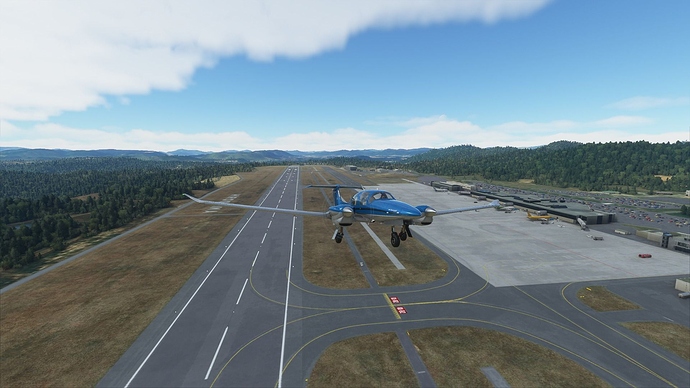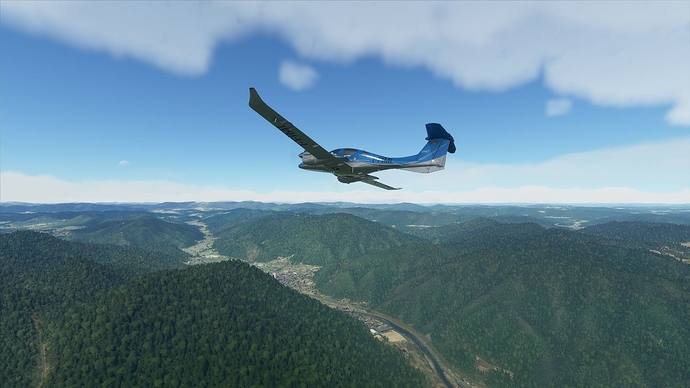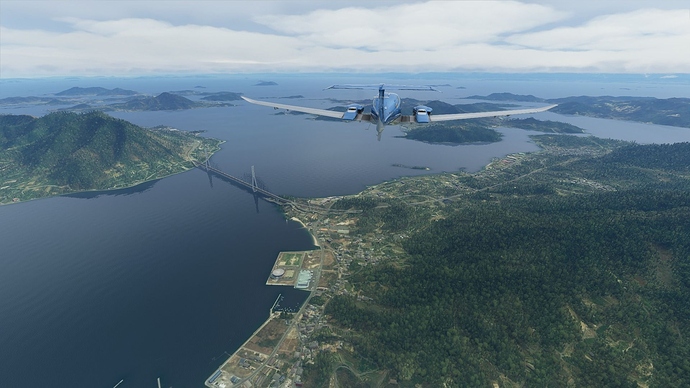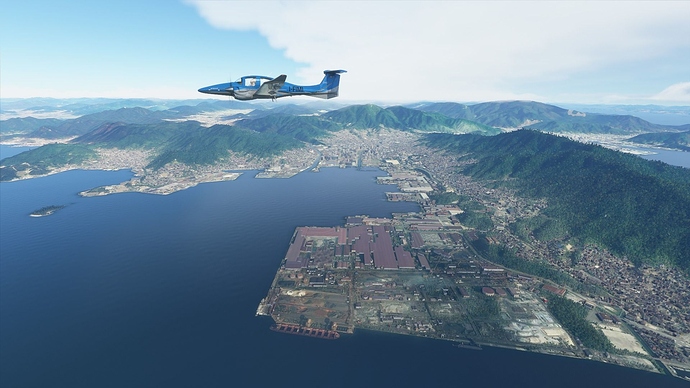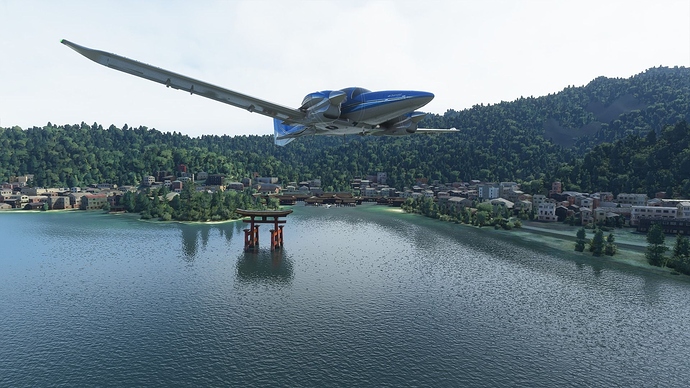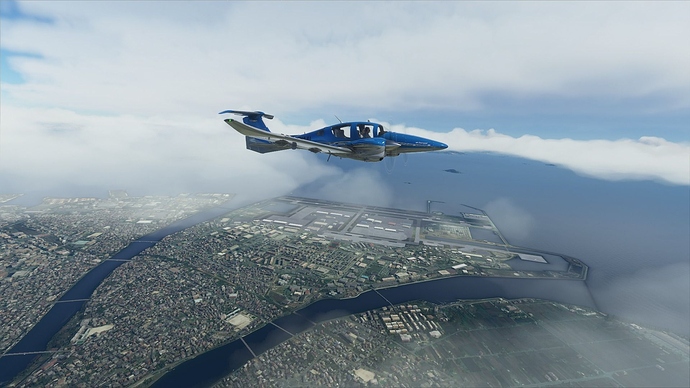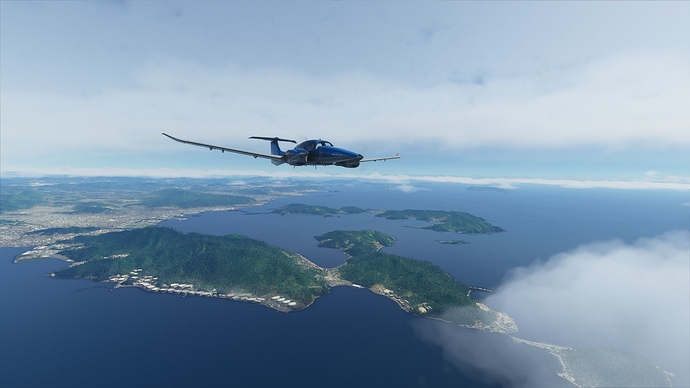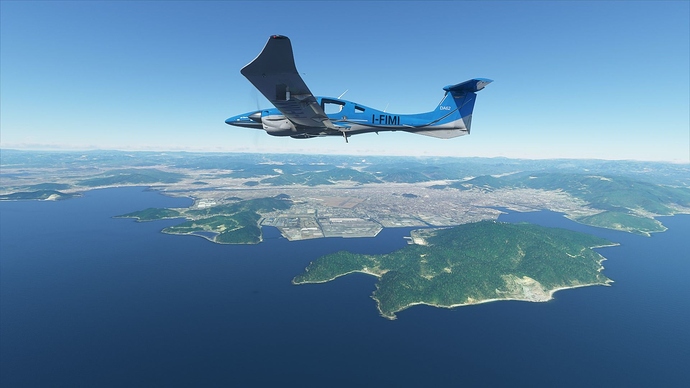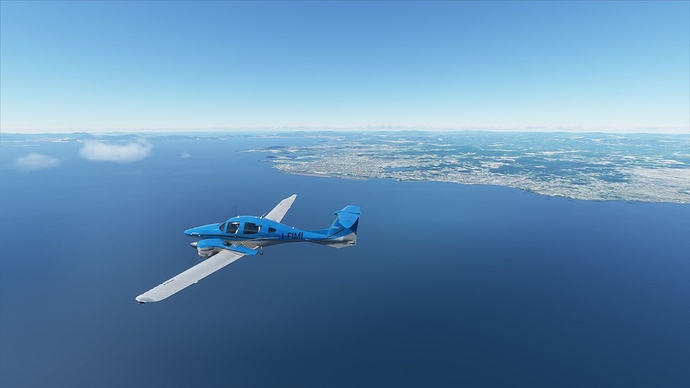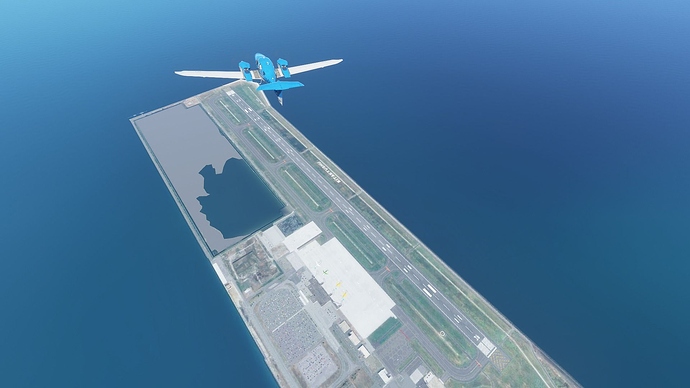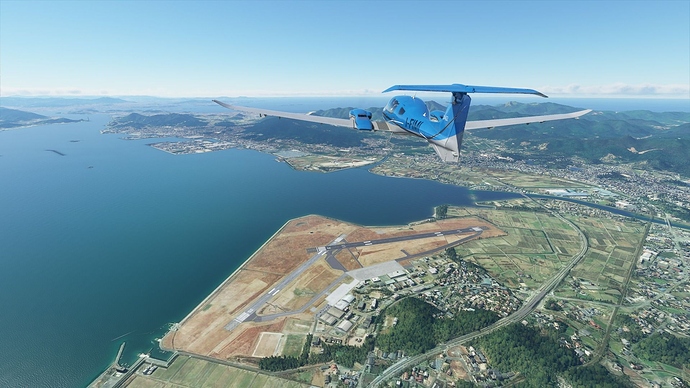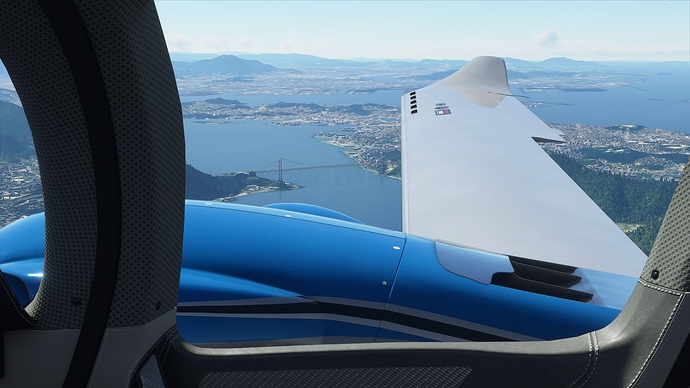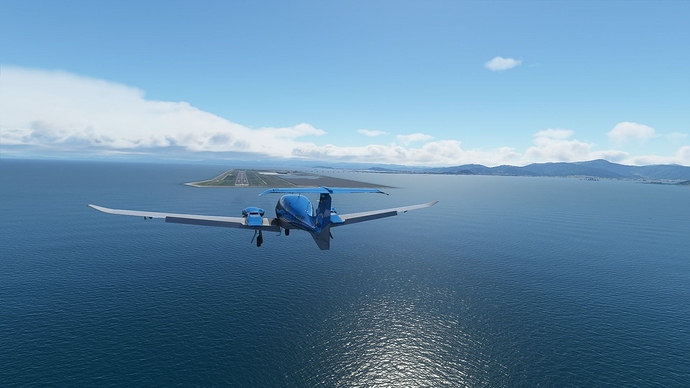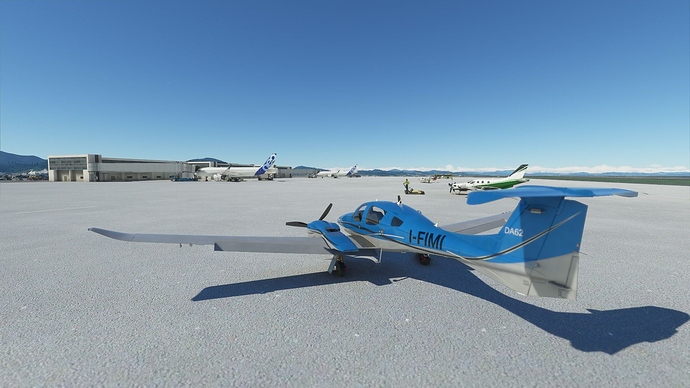Time for the 10th leg, from Hiroshima (RJOA) to Kitakyushu (RJFR).
Here’s the full gallery: https://www.flickr.com/photos/abriael/albums/72157716330740602
Taking off from Hiroshima Airport. Incidentally, Japan loves having big names for the airports written on the lawns so that they can be read from above.
The valley of Numata River is very visible north of the airport.
Tatara Bridge is another of the many connecting the islands in the Seto Inland Sea. It was opened in 1999.
Some of said islands, Osaki-Shimozima, Teshima, Kami-Kamagari, and Simo-Kamagari.
Kure, one of the most relevant shipbuilding cities in Japan. The Kure Naval Arsenal and its metalworks are known all over the world.
The arsenal gave birth to the first capital ship built in Japan (battlecruiser Tsukuba in 1905) all the way to the largest battleship ever, the Yamato.
It’s also home to several related museums, including the Yamato museum.
Itsukushima Shrine with its famous Torii gate in the water. It’s an UNESCO World Heritage Site.
It’s said to have been built at the end of the 6th century, but parts of the site have been added and rebuilt in several stages. The shrine is dedicated to the worship of Ichikishimahime no mikoto, Tagorihime no mikoto, and Tagitsuhime no mikoto, the kami of sea and storm. The island itself is believed to be a god.
Iwakuni and its airport. The city is famous for its cherry trees (the cherry blossom is the crest of Iwakuni) and its oil industry.
The airport is actually mostly military, home to the US Marine Corps, but it opened commercial operations in 2012.
The very visible tanks of the Idemitsu Tokuyama refinery complex. It’s one of the largest in Japan. The main complex was built in just 10 months in 1957. Crude oil processing has been recently halted, changing outputs to different petrochemical products for the production of plastic, paint, adhesive, clothes, and much more.
The city of Hofu and its military airbase belonging to the Japan Air Self-Defense Force. The city is depicted in the anime Mai Mai Miracle.
The city of Ube and its Yamaguchi-Ube airport. It’s the westernmost commercial airport in the Japanese mainland of Honshu.
Flying over Kitakyushu airport, which like many others, is built on an artificial island. What did I say about having very visible names from above? There’s no getting lost in Japan.
Funnily, the water thing north of the terminal that looks like a glitch actually isn’t. The AI interpreted it accurately, surprisingly so.
Shimonoseki, the westernmost city in the mainland. It’s known as the capital of Fugu (pufferfish) for which it’s famous. The Japan Marine Self-defense force Ozuki Airifield is also located here.
Kanmon Bridge over the Kanmon Straits links Shimonoseki in Honshu with Kitakyushu in the western island of Kyushu. It was opened in 1973.
Landing in Kitakyushu. The city is known for the lovely Kokura Castle, its steelworks, and a Toyota plant right by the airport. The airport, like quite a few others, was built on an artificial island to be able to operate cargo operations 24/7 and this is used to supply the industrial sector in the city.
While the runway is only 2,500 meters, work to expand it to 3 km is set to begin next year, facilitated by the fact that the waters around the airport are relatively shallow.
It’s home of StarFlyer, an airline that positions itself in the middle between low-cost and full-service.
